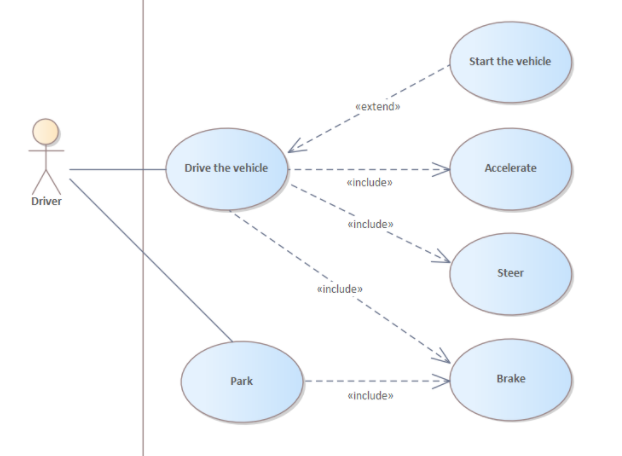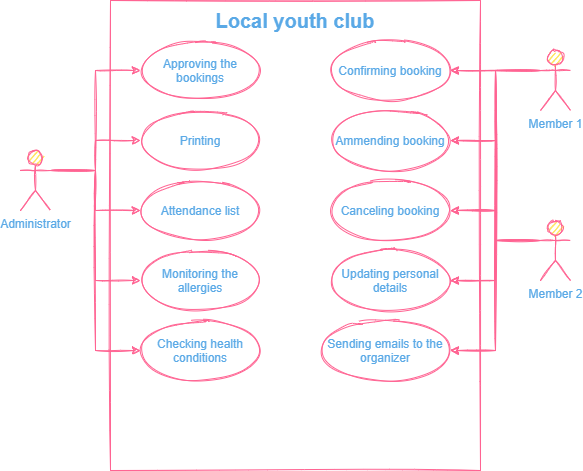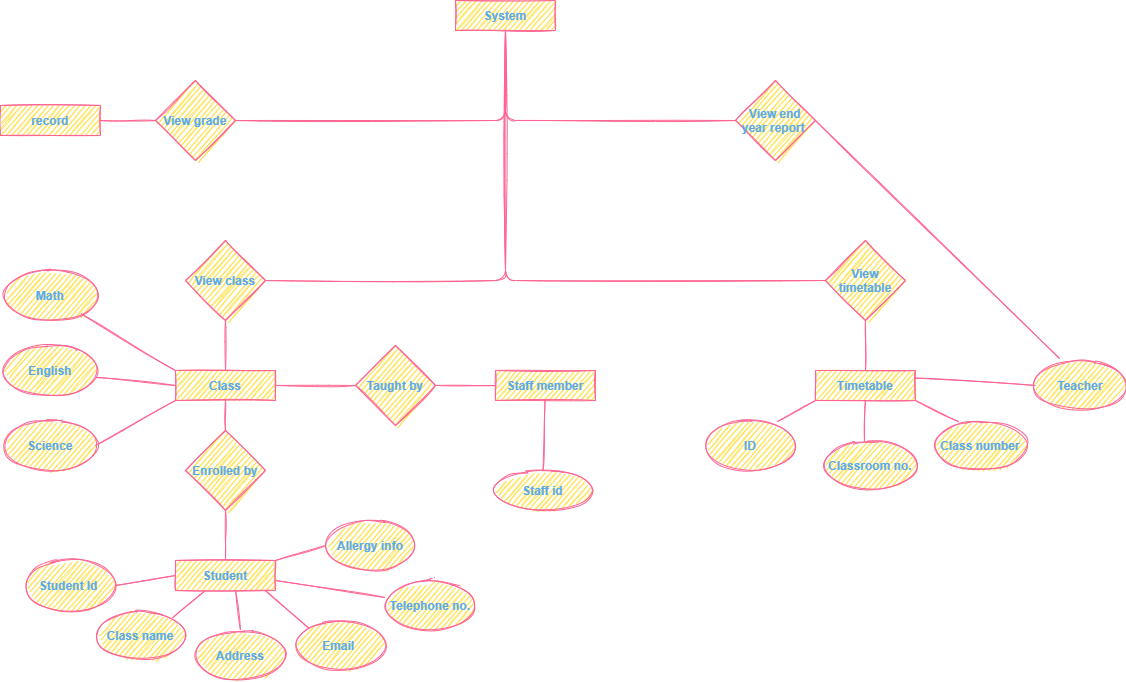CIS010-6 ASSIGNMENT SAMPLE – DATA MODELLING AND MANAGEMENT 2022
Question 1
Part A
In order to identify problems, users access the system in a variety of ways, and the use case model shows what they do. It explicates the users’ objective, interaction techniques and system, and what actions the process is expected to achieve these objectives. Knowing how an end-user can possibly communicate in a “Unified Modelling Language” or UML means it will be crucial (Gordon et al. 2017).
The team should therefore be in a position to organize and define requirements. Use-case Modeling approaches help in explaining the high-level operations which are also system-wide. In the time of interacting between actors and systems, the diagrams created in usage cases can be easily recognized. It contributes to the definition and illustration of the prerequisites and contextual factors of the entire process.
- It can lay down key requirements, mainly concerning the techniques of discussion and the agreement.
- The system producing the design specifications helps to indicate and the procedure of how the process actually happened.
- The effective implementation of the database framework is started after the design of the use-case diagram and also includes the environment in which the framework will be operated.
A use case diagram shows how successfully a system user can interact. Finally, the team should be able to create and organize requirements. However, case diagrams may also be used to display any system in which players strive towards this aim without computer programming having to make certain adjustments. Users enjoy many illustrations and layouts desire to keep the information minimal.
UML case models do not display each element in detail for the system. Instead, the links between instances, characteristics and technology provide high-level pictures.
Part B
Use cases as a set of tasks necessary for a particular or main purpose work to be completed. The easiest method to describe use case description is, for example, A use case scenario is the main aim with numerous chores and a straight and linear path across these operations is a potential example of a case scenario.
A case of actual usage shows how the utilization of a system or process will achieve a goal. It may be used in any process as a software word. Use-case Scenarios assist explain system-wide high-level activities (Zhang et al. 2018). The diagrams generated in use cases may be easily identified while engaging between actors and systems. It helps to define and illustrate the preconditions and contextual aspects of the whole process.

Figure 1: Use case scenario
(Source: draw.io)
From the above example, it can be seen that the driver is the main actor and the system is based on the car mechanism. The driver can drive the vehicle and can park the car. In addition to that, they include, as well as the extended functions, are being used for the other car operations to be done by the driver.
The starting of the vehicle is done using the extended functionality and using the include function, various other operations like park, brake, steer and accelerate.
Part C

Figure 2: Use case Diagram
(Source: draw.io)
The above figure is the use case diagram of the given scenario. The actors present here are administrator, member 1 and member 2. In addition to that, the operations of the actors are given. The admin basically approves the bookings, prints, manages the list of attendance, monitors the allergies and also checks the health conditions. The members in the scenario confirm the booking, cancel the booking and perform other activities (Zhao et al. 2019).
Question 2
Part A
The ERD or the “Entity Relationship Diagram” or ERD, is a schematic illustration that aids in the creation of an appropriate portrayal of relationships among places, things, events, or thoughts for individuals inside a certain information technology system. The appropriate inclusion of three important components in this sort of diagram aids in the portrayal of the business flow of information.
The ER model displays the institutional visual representation. It is indeed a decent standard data model. The data elements of anything like the software and connections are described in this paradigm. It offers a conceptual design for a database. Another extremely practical and modified data is also produced.
A diagram is called a diagram for the entity in the database layout in ER modelling. The various components of the ER or the “Entity Relationship” diagram are described below (M. and Bahsoon, 2018).
- Entities: This function helps to idealize the item for collecting the information.
- Relationships: This feature helps to correctly build relationships within entities and attributes.
- Attributes: This feature contributes to the construction of characteristics and properties descriptions for a given entity.
Part B

Figure 3: Entity Relationship Diagram
(Source: draw.io)
The above figure shows the entity-relationship diagram of the scenario. According to the picture above for ER diagram, the “Luton Secondary School” database has been structured properly by proper examination of the student staff details and the timetable.
This demonstrates there are available entities like a schedule, employee, student class and system to assist ensure the registration process and the construction of databases for the school is properly completed. The chart demonstrates that distinct addresses, student ids, class names, allergy information, email and telephone numbers are used in students.
There are various attributes, entities and relationships present in the above diagram. The entities or tables that are created in the database are class, student, timetable, staff member, system and record. Each entity has various attributes and the entities are connected by a particular relationship.
Question 3
Part A
The statement is given below.
“SELECT * FROM member;”
The above statement selects all the rows from the table members.
Part B
The statement is given below.
“CREATE TABLE member (
member_id int NOT NULL PRIMARY KEY,
FirstName varchar (255),
LastName varchar (255),
Address varchar (255),
Email varchar (255),
ContactNumber varchar (255),
);”
The above statement creates the table members and in those various attributes are also created. Along with the attributes, the data type and the length of the attributes are also mentioned. In this table member, the primary key is “member_id”.
Part C
The “SQL WHERE Clause” is used mostly to indicate the important condition of the data being collected from the single table and to add the data to numerous tables. If the modified condition is met in this sentence, then the particular value loaded in the tabulated table can only be preserved.
The DELETE and UPDATE declaration, which helps users inspect the column, may utilize this clause. For example, if the table “member” is considered, then the syntax will be
“SELECT LastName FROM member
WHERE member_id = 3;”
The above statement selects the last name from the table member and then where the condition is applied and “member_id” is 3.
Part D
The statement is given below.
“SELECT DISTINCT member_id FROM member
ORDER BY FirstName;”
The above statement selects the distinct “member_id” from the table member and then orders by the attribute “Firstname”.
Question 4
Part A
Normalization of data is the type of design approach that helps decrease the “data redundancy” and eliminate unwanted properties such as anomaly deletion, update, and insertion. Normalization largely contributes to the division of a huge table into a smaller table and helps establish linkages between the relations. In SQL, the fundamental goal of normalization is the elimination of repeated or superfluous variables or data and the logical statement of data.
Normalization is the process of data arrangement in some type of database. This involves creating tables and column relations according to data protection rules, which make the database very flexible by reducing duplication and improper dependency. Redundancy of data consumes disc space and poses management issues.
If data should be changed in much more than one location, the data must be changed exactly in the same fashion throughout each website (Tavast et al. 2018). The various forms of normalization are described below.
- First Normal Form: In this phase, it is assigned the “suitable keys” and separate files to assign repeated fields.
- Second Normal Form: This phase allows to specify of non-key items and hence to allocate distinct tables under a specified key for these elements.
- Third Form: Standardization is created in the stage via the total removal of unnecessary tables and data items.
Part B
1NF
In this part, the table is in the first normal form.
| Subject | Format | “Publication type” | Publisher | “Publisher country” | Title | “General Name” | Author | “Author nationality” | Pages | “Thickness” | Price |
| Physics | Textbook | Self-publication | Roli Books | India | 1 | Light and vision | M. Peter | Christian | 1023 | 12 | $78 |
| Computer | Textbook | Literary journals | Westland publications | India | 2 | Python | J. Anthony | Christian | 950 | 19 | $84 |
| Mathematics | Textbook | Scholarly journals | Hachette India | India | 3 | Reasoning | C. Peter | Christian | 850 | 24 | $93 |
Table 2: 1NF Table
(Source: Self-created)
2NF
In this part, the tables are converted from the first normal form to the second normal form.
| Subject | Format | Publisher | Title | Author | Author nationality | Price |
| Physics | Textbook | Roli Books | 1 | M. Peter | Christian | $78 |
| Computer | Textbook | Westland publications | 2 | J. Anthony | Christian | $84 |
| Mathematics | Textbook | Hachette India | 3 | C. Peter | Christian | $93 |
| Title | Pages | Thickness |
| 1 | 1023 | 12 |
| 2 | 950 | 19 |
| 3 | 850 | 24 |
| Publisher | Publisher country | Publisher type |
| Roli Books | India | Self-publication |
| Westland publications | India | Literary journals |
| Hachette India | India | Scholarly journals |
Table 2: Conversion from 1NF to 2NF
(Source: Self-created)
3NF
In this part, the tables are converted from the second normal form to the third normal form.
| Title | General name |
| 1 | Light and vision |
| 2 | Python |
| 3 | Reasoning |
| Thickness | Pages |
| 12 | 1023 |
| 19 | 950 |
| 24 | 850 |
| Subject | Format | Title | Author | Price |
| Physics | Textbook | 1 | M. Peter | $78 |
| Computer | Textbook | 2 | J. Anthony | $84 |
| Mathematics | Textbook | 3 | C. Peter | $93 |
| Author | Author nationality |
| M. Peter | Christian |
| J. Anthony | Christian |
| C. Peter | Christian |
| Format | Publication type | Publisher name | Thickness |
| Textbook | Self-publication | Roli Books | 12 |
| Textbook | Literary journals | Westland publications | 19 |
| Textbook | Scholarly journals | Hachette India | 24 |
| Publisher | Publisher country |
| Roli Books | India |
| Westland publications | India |
| Hachette India | India |
Table 3: Conversion from 2NF to 3NF
(Source: Self-created)
Reference List
Journal
Albarak, M. and Bahsoon, R., 2018, May. Prioritizing technical debt in database normalization using portfolio theory and data quality metrics. In Proceedings of the 2018 International Conference on Technical Debt (pp. 31-40).
Lu, W., Zhao, Z., Wang, X., Li, H., Zhang, Z., Shui, Z., Ye, S., Pan, A. and Du, X., 2019. A lightweight and efficient temporal database management system in TDSQL. Proceedings of the VLDB Endowment, 12(12), pp.2035-2046.
Tavast, A., Langemets, M., Kallas, J. and Koppel, K., 2018, July. Unified data modelling for presenting lexical data: The case of ekilex. In Ed. J. Čibej, V. Gorjanc, I. Kosem & Simon Krek, Proceedings of the XVIII EURALEX International Congress: EURALEX: Lexicography in Global Contexts, Ljubljana (pp. 749-761).
Van Aken, D., Pavlo, A., Gordon, G.J. and Zhang, B., 2017, May. Automatic database management system tuning through large-scale machine learning. In Proceedings of the 2017 ACM International Conference on Management of Data (pp. 1009-1024).
Zhang, B., Van Aken, D., Wang, J., Dai, T., Jiang, S., Lao, J., Sheng, S., Pavlo, A. and Gordon, G.J., 2018. A demonstration of the ottertune automatic database management system tuning service. Proceedings of the VLDB Endowment, 11(12), pp.1910-1913.
Know more about UniqueSubmission’s other writing services:

